A Crisis of Undiagnosed Cancers Is Emerging in the Pandemic’s Second Year
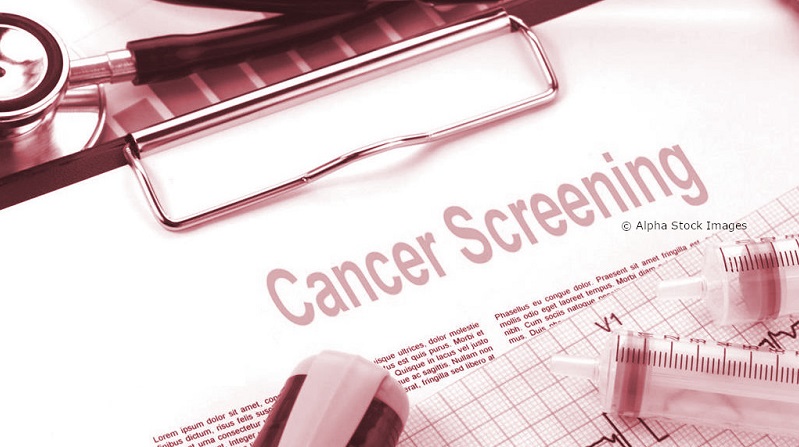
![]()
A Crisis of Undiagnosed Cancers Is Emerging in the Pandemic’s Second Year – Teresa Ruvalcaba lay on a bed in the emergency room of Chicago’s Mount Sinai Hospital, her right breast swollen to nearly twice the size of her left, the skin so thick and dimpled that the doctor examining her would note that it resembled an orange peel.
Ojalá que sólo sea una infección, she thought, as she struggled to catch her breath, not knowing she had a partially collapsed lung. I hope it’s just an infection.
For more than six months, the 48-year-old factory worker had tried to ignore the pain and inflammation in her chest. She was afraid of visiting a doctor during the pandemic, afraid of missing work, afraid of losing her job, her home, her ability to take care of her three children. She kept working until she couldn’t, until the pain forced her to ask her son to drive her to the hospital on this cold, cloudy night in January.
Seven miles away, 24-year-old Sergio waited in his cramped childhood bedroom, clothes scattered on the floor and his medical school entrance-exam books untouched on a shelf, his eyes locked on his phone. Sergio usually accompanied his mother anywhere she might need help with her limited English, but because of the pandemic, he hadn’t been allowed past hospital security. After two and a half hours of silence, he texted her in Spanish, “How’s it going?”
“My son they are doing all the checkups they are going to put me in a machine right now for the checkup,” she typed back, also in Spanish.
The page from the hospital caught oncologist Dr. Paramjeet “Pam” Khosla in her kitchen in the southwest suburbs, where she, her husband and their two adult daughters had lingered to talk after dinner. Although she had been in practice for more than 20 years, Khosla’s heart still jumped a little whenever the phone buzzed on the nights she was on call.
A chest X-ray showed a large mass in the chest of a woman complaining of pain in her breast, the emergency room doctor told her. Concerned, Khosla told him to order an immediate biopsy. They agreed she would see the patient as soon as she could.
Here we go again, she thought.
In the shadows of COVID-19, another crisis has emerged. With the pandemic in its second year and hope intermittently arriving along with vaccine vials, it’s as if a violent flood has begun to recede, exposing the wreckage left in its wake. Amid the damage is an untold number of cancers that went undiagnosed or untreated as patients postponed annual screenings, and as cancer clinics and hospitals suspended biopsies and chemotherapy and radiation treatments. Across the country, preventive cancer screenings plummeted by as much as 94% during the first four months of last year. At Mount Sinai, the number of mammograms dropped by 96% during that same period. By July, screenings had started to rebound, both nationally and at Mount Sinai, but still trailed pre-COVID-19 numbers. Fewer screenings led to a decline in new diagnoses, which one study found fell by more than 50% for some cancers last year. But people didn’t stop getting cancer; they stopped getting diagnosed.
As patients return to their doctors, the toll of those dark months is becoming visible. The National Cancer Institute has predicted almost 10,000 excess deaths over the next decade from breast and colorectal cancer alone because of pandemic-related delays in diagnosing and treating these two cancers, which often can be detected early through screening and account for about 1 in 6 cancer deaths. Like the pandemic itself, the impact is expected to hit communities of color particularly hard. Black Americans already die of all cancers combined at a higher rate than any other racial group. And cancer is the leading cause of death among Latinos, with breast cancer outranking other cancers for women.
After almost five hours at the hospital, Teresa left that night without a diagnosis but with instructions to call Khosla. Sergio picked her up outside the emergency room door. On the way home, they talked about all the tests she had undergone. Neither of them mentioned the word cancer.
Last summer, as her right breast began to swell, Teresa stuffed the left side of her bra with paper towels, embarrassed that someone at work might notice.
A solidly built woman with deep brown eyes and tattoos weaving up her neck and down her arms, Teresa had worked nearly half her life at the same candy manufacturing factory on Chicago’s West Side. She immigrated to the United States from Mexico almost on a whim at the age of 21, settled in Chicago, became a permanent resident, and got hired at “los dulces,” as she calls it. Over time, the factory’s owners changed — Kraft, Kellogg, Ferrara Candy — but Teresa remained. She eventually became a machine operator, earning $21 an hour.
The factory was more than a job to her. It was where she made friends, told jokes to pass the long hours, and blasted music, especially the upbeat cumbia songs of her teenage years, in the locker room. Her colleagues had a hard time keeping up with her energy, but they knew she would pick up the slack if someone on the line slowed down or cover for them if they were out, because Teresa never said no to work. The income allowed her to support her children on her own and, in 2008, accomplish something she had not thought possible: put $5,000 toward buying a century-old, Cape-Cod style home in a largely Latino Chicago neighborhood where the roar of airplanes from nearby Midway Airport regularly interrupted the quiet.
The tentative grasp on stability came at a price. She usually worked the overnight shift, often arriving early and staying late, then rushed home to get Aurora, Sergio and Roberto off to school. When they were young, the children enjoyed the lollipops and gummies she brought from work; it wasn’t until they were older that they noticed her bruised knees and bloodied fingers.
As the pandemic struck, Teresa didn’t slow down, even as it hit essential workers particularly hard. She had come close to losing her house in 2018 after falling behind on her mortgage payments. She couldn’t risk it happening again.
She worked overtime and filled in for co-workers who were sick with COVID-19. Between shifts, she picked up groceries for that night’s dinner, then collapsed on the living room couch for a few hours, only to wake up and do it all over again. She had created a plan to protect herself from the virus, wearing two masks and latex gloves on her hourlong commute on the train and bus. Even though her chest felt as if it was on fire, she kept working. She didn’t want to get COVID-19 at a doctor’s office or the emergency room, and she was so busy she didn’t have much time to think about her symptoms.
“I didn’t pay a lot of attention to it because I have to be both a mother and a father to my children,” she said.
Her tattoos mapped her life, its struggles and devotions. A lion for León, the city in Mexico where she grew up; a Chicago flag for her home since; her mother’s face to mark her death, a loss that still makes Teresa’s breath catch eight years later. When she faced losing her home, she pledged to memorialize Santa Muerte — Saint Death, a Mexican folk saint — in a tattoo if she could save it. Her prayers were answered when she was able to refinance her mortgage, and Teresa, resolute, had the saint inked on her neck. At an ornate altar in her dining room, she made offerings of flowers and apples and lit candles to Santa Muerte. As she felt herself getting sick, she prayed for her health, and for joy and protection for her family.
Finally, when her chest, raw and warm to the touch, hurt too much for her to work, she asked for time off and scheduled a virtual appointment at a nearby clinic in early January. The doctor, viewing her breast through a computer screen, thought Teresa had an infection and prescribed antibiotics.
The pills didn’t help. Still, less than a week later, Teresa sat on the worn living room couch, making plans to return to work the next day. Then, unable to tolerate the burning any longer, she wept. Her daughter, Aurora, hearing the sobs, came to check on her. Teresa agreed to let Sergio take her to the ER.
Sergio was in college before he learned there was a term for what he had been doing for as long as he could remember: language brokering.
When his family went to the neighborhood clinic, 6-year-old Sergio explained to the doctor that he and his siblings needed their school physicals. He negotiated a payment plan with the utility company when he was 9. And throughout his childhood, at parent-teacher conferences, he proudly translated his teachers’ comments: exemplary student, near-perfect attendance, excels at exams.
Those achievements eventually won him a full-tuition scholarship to Pomona College in California, making him the first in his family to leave home for college. Even there, his responsibilities followed him. He monitored his mother’s bank account on his phone, watching anxiously when the balance dipped near zero. When, during his junior year, the mortgage company filed for foreclosure on their home, his family emailed him the documents to translate, which he did, late at night, alone in his dorm room.
Sergio’s freshman year at college had nearly broken him. The classes were rigorous, the pace accelerated, and the lower his grades sank, the more he felt like an imposter. Worse, if he flunked out, he wouldn’t be able to get a good job, and he knew his family was counting on his support. His sister, Aurora, 26, has developmental delays and has not worked consistently although she has an associate’s degree in graphic arts. His 21-year-old brother, Roberto, dropped out of high school a few months shy of graduation with what the family believes is undiagnosed depression. His 2017 honor roll certificate still hangs on the refrigerator.
Sergio didn’t resent the pressure, but he felt engulfed by it. “Everything was relying on me to succeed, and I wasn’t succeeding,” he said. “It got to the point where I didn’t want to be the one solely responsible for improving the lives of my family. I wanted out of that responsibility.”
At points, he even contemplated suicide. But with the help of a therapist, he regained his footing and sense of purpose. He found work at a research lab focused on improving mental health in Latino and other marginalized communities, and he volunteered as a translator for Spanish-speaking patients at a local hospital. He began dating another pre-med student, Ayleen Hernandez, after he offered to help her study for biology and she accepted even though she already knew the material. And he discovered a way to understand his own experience. One day in class, when a professor discussed language brokering, Sergio was captivated. He ended up writing his undergraduate thesis on the topic, citing research showing that Latino communities often place the needs of the family above those of the individual.
In the acknowledgements, he addressed his mother: “The resilience and strength you’ve exhibited during our family’s most difficult and trying moments have not gone unnoticed,” he wrote. “I hope to one day ameliorate these stressors, so that you don’t have to anymore.”
After graduating in 2019 with a degree in cognitive science and a minor in Chicana/o-Latina/o studies, Sergio moved back home to work for a year and help with the bills before applying to medical school. Even though he had hoped to find a job in health care, he felt he needed to accept the first offer he got, confirming prices with suppliers for a company that sells industrial products online. He told himself it was only temporary and, in the interim, he would study for the MCAT and volunteer as a Spanish interpreter at a free clinic in Chicago.
Then came the pandemic, and after that, he noticed his mother getting tired and weak. He urged her to go to the doctor, and she kept promising she would as soon as she had a day off. He decided to stay home a little longer.
Pam Khosla knew the answer to the question before she asked it. Turning to the patient on the exam table, a 53-year-old Black woman in jeans and metallic blue boots, she said, “You missed your mammogram. What happened?”
“COVID,” the woman answered.
Khosla, a white lab coat enveloping her slight frame, rolled closer in her chair. She pointed to an image of the patient’s right breast on the desktop computer screen.
“See that starlike structure?” she asked, her voice gentle but assured. “It’s cancer.”
Khosla, the hospital’s chief of hematology oncology, had delivered a cancer diagnosis almost a dozen times that week. At 56, she was used to giving people bad news, offering them tissues and holding their hands as she did. But the fallout from the pandemic made her feel inadequate. Patients were showing up with more neglected bodies and more advanced cases of cancer than she usually saw, which, at Mount Sinai, was already more than many oncologists did.
Located in Chicago’s North Lawndale community, where almost half the residents earn less than $25,000 a year, Mount Sinai serves a population that is primarily Black and Latino and that relies on Medicaid, government-funded insurance for the poor. Patients here are more likely to visit an emergency room than a primary care doctor for non-urgent conditions, and they experience disproportionately high rates of hypertension, asthma, diabetes and cancer.
Khosla joined the hospital in 2005, persuaded by her husband, a doctor who had recently transferred to the cardiology department there, that at Mount Sinai she would be able to help some of Chicago’s poorest and sickest patients. For Khosla, who had earned her medical degree in India and carried memories of mothers and children camped out on hospital floors for hours, the sense of mission was appealing. At Rush University Medical Center, where she previously worked, patients had the time and the resources to seek her out for second or third opinions. At Mount Sinai, patients often had neither.
That only worsened during the pandemic.
Cancer care in the United States has never seen a disruption of this magnitude. Advances in prevention, increased early detection, improved treatment and new drugs fueled a 31% drop in cancer death rates from 1991 to 2018. But the pandemic has left many patients, particularly those from disadvantaged communities like those served by Mount Sinai, sicker and with fewer treatment options.
It may be another year or two before the cancer death toll begins to rise, in part because treatment can delay death for years after diagnosis, said Dr. Norman E. “Ned” Sharpless, director of the National Cancer Institute. Some cancers also may be slow-growing and are treatable despite a later diagnosis, but others are not. The aftermath of the pandemic may turn one public health crisis into many, endangering people’s lives and risking decades of progress in cancer research and care, Sharpless said.
“The longer the pandemic continues,” he said in an email, “the more significant the impact of the pandemic on cancer outcomes will be.”
Late last year, Khosla helped Mount Sinai launch a program to persuade reluctant patients to come in for cancer screenings by touting the hospital’s COVID-19 safety precautions on every outreach call. But as the oncology department’s eerie quiet began to give way to a rush of patients in January, she saw patients whose health had deteriorated so much they needed help breathing or swallowing.
Recently, she counted at least 10 cases of advanced cancer in one four-week period. She saw one patient with a grapefruit-sized mass on his neck. Another, whose tumor had pushed his brain dangerously close to the skull, was transferred to hospice. “He never got to see the light of treatment,” Khosla said. All of these patients had been afraid to seek treatment at the hospital during the pandemic.
While her family slept at night, she read medical journals, learning about the latest drug approvals and newest guidelines, and she sometimes sent herself texts in the early morning hours about a test to order or a treatment option to explore.
“Cancer doesn’t give you the satisfaction ever of having done a 100% job because the results lie in the future,” she said. “You’re always questioning yourself, especially with my patient population.”
Teresa’s case exemplified so much of what Khosla saw go wrong during the pandemic. The fear, the delays, the demands on essential workers, the limitations of telehealth.
Three days after Teresa’s emergency room visit, Khosla met her for a follow-up appointment. Teresa and Sergio had arrived early. He turned away before Khosla lifted the hospital gown. Shocked at the extent of the inflammation, Khosla quickly gathered herself, hoping Teresa hadn’t noticed her alarm. It had been a decade since she had seen such a severe case. The biopsies confirmed her suspicions: advanced inflammatory breast cancer.
“If she would have come six months earlier, it could have been just surgery, chemo and done,” Khosla said later. “Now she’s incurable.”
The Ruvalcaba family’s living room had long doubled as Teresa’s bedroom because she wanted to give each of her children their own room. But after her cancer diagnosis, she spent almost all her time there, sitting in the oversized chair her sons set up for her after her swollen breast made it too uncomfortable to sleep on the couch.
She passed the endless hours texting friends and watching old Spanish-language movies and cartoons, supporting the weight of her right breast with her left hand. She sat with her dogs — Bagel, a black pug, and a white poodle mix named Max — at her feet, rarely leaving the house except to walk them or go to her medical appointments.
Sergio, who is the only person in the family who can drive, took her to and from the hospital, having gotten permission from his supervisor to make up the time. The route sometimes took them past the factory, flooding Teresa with sorrow as she asked herself, “When am I going to be able to go back?”
Sergio and Teresa rarely spoke about anything beyond the day’s logistics during these trips, each determined to protect the other from their thoughts. One day in late February they were driving to a physical therapy appointment for her swollen hand, a side effect of the tumor. It was the first time Teresa had left the house after Roberto shaved off most of her hair, which had begun to fall out from the chemotherapy. She thought about her family, her job, her hair as she gazed at the overcast sky and, before Sergio could see, wiped away the tears.
“I don’t want him to feel equally sad,” she said later. “I don’t want him to take on my pain.”
Even with health insurance from her job, the medical bills, past due and seemingly insurmountable, kept coming. Some days she directed Aurora to toss them unopened in a Ziploc bag on the floor of the living room. She received disability payments following her cancer diagnosis and Sergio contributed what he could, but the money wasn’t enough to cover the family’s expenses. Delinquent utility bills alone topped $1,600.
Sergio was driving his mother home from another physical therapy appointment in February when traffic stopped for a train. Sergio, beginning to fall behind at work and thinking about all the unanswered emails and Slack messages waiting for him, bounced his knee and checked the time. Ever since that night at the ER, he had ricocheted from his mother’s medical appointments to his job, to the grocery store, to dinner duty, to filling Teresa’s prescriptions, to picking up the cake for Aurora’s birthday. He thought he might erupt.
“I try to be honest with myself and transparent and aware of my own capacities,” he said. “But I just started feeling the weight of everything at once.”
He waited until he had dropped his mother off at home, circled the block to find a parking space, shut the door to his room and signed off from work for the day. Then he looked up to make sure his door was closed and, to muffle the sound, cried into his sleeves.
Khosla met with Teresa every three weeks, seeing her in between Teresa’s chemotherapy infusions down the hall at Mount Sinai.
At their mid-March appointment, the doctor turned around after washing her hands at the sink and was immediately struck by the dramatic change in Teresa’s appearance.
“The swelling is going down,” she said. An interpreter stood by to translate her words into Spanish, but Teresa understood these words on her own.
“Sí. Mucho,” she responded.
The chemotherapy was working. Teresa’s breast had returned to almost its normal size. She felt lighter and, with the fluid in her lung drained, like she could breathe again. Before she left, she found the confidence to ask the doctor for help with transportation so she wouldn’t interrupt Sergio’s workday. She climbed into the cab, with the winter’s last snow falling around her, and for the first time in months, Teresa felt hopeful.
“[I will] be done with this and find a part-time job in the mornings, too,” she said later, “to get out of debt and help my children.”
That morning, as they sat in the exam room, Khosla knew the tumor in Teresa’s breast had responded well to treatment, but not for the reason Teresa wished.
The more aggressive a cancer — and inflammatory breast cancer is both aggressive and rare — the more quickly it tends to shrink. Chemotherapy attacks growing cells, and advanced tumors with rapidly growing cells, like Teresa’s, initially may be easier to target but ultimately harder to eliminate.
The oncologist told Teresa that her stage 4 cancer had metastasized, infiltrating her lymph nodes, sternum, skin, hip and rib. She would need to meet with a surgeon to discuss treatment options. But Khosla chose her words carefully. She wanted Teresa to stay strong enough to get through her treatment, and Khosla herself was an optimist who liked to look beyond published survival rates. She could sense that Teresa was focused on the improvement she could see and feel, and the doctor wrestled with how much more to say.
I want her to have some peace for a little bit, she decided.
She would wait until the next month’s appointment.
As Aurora pushed the cart through Cermak Fresh Market this busy Sunday afternoon in April, Sergio trailed a few steps behind, letting his sister lead the way.
When she confused the parsley and cilantro, he pointed out the signs above the dewy herbs. He didn’t intervene when she panicked next to the pasta, unsure of which sauce to get for the lasagna she planned to make.
“Try to figure it out,” he coaxed, nodding when she returned with the chunky marinara.
The outing would have been inconceivable a few months ago, given Aurora’s disability and severe anxiety around crowds. But Sergio was trying to help his siblings become more independent. He supervised Aurora as she made dinner, and he arranged to teach Roberto to drive. He was trying to prepare them to make their way without him by their side.
Sergio was making plans, again, to pick up the threads of his life. Ayleen, now a first-year student at Baylor College of Medicine, was waiting for him in Houston.
He didn’t regret his decision to stay in Chicago. Early on, he worried he would grow complacent and abandon his aspirations to become a doctor, but seeing COVID-19 ravage communities of color and witnessing his mother’s cancer strengthened his determination. He felt better prepared for medical school, even if the years at home had threatened to derail his plans.
Sergio tried not to think about the gap widening between him and Ayleen. He celebrated when she was accepted to multiple medical schools and profiled on the college website. And they still had date nights on the weekends, curling up in front of their laptops — him in Chicago, her in Houston — to eat pizza and watch “Superstore” together.
Some nights they fell asleep to the glow of the computer screens, and others they stayed up late talking about what would happen after Sergio got to Houston, whether he would end up leaving if he got accepted to medical school somewhere else or had to return to Chicago for his family. Life could go in a lot of directions from Houston, but he had to get there first.
In the kitchen, Sergio stood next to the refrigerator, watching Aurora and Roberto put away the groceries. Roberto held up the chicken patties. “What should I do?”
“Keep them out,” Sergio responded. Aurora was going to bake them for that night’s dinner.
Teresa watched from the back porch. “They are doing the things I once did for them,” she said. “The sacrifices I made are serving them now.”
She rested her hands across her chest, the pink blossoms of the apple tree behind her beginning to open, and listened to her children inside.
Eight days later, the family gathered in the living room, with Teresa in her chair, the TV playing in the background and the children scattered around her.
Teresa had left the doctor’s appointment with her head spinning. She had expected the oncologist would tell her she was getting better and could return to work. Instead, Khosla told her that, though she would do everything she could, Teresa likely would be on some form of treatment indefinitely. She had patients who had made it as long as six or seven years with this cancer, Khosla said, and she would still fight for a cure. Teresa didn’t ask any questions, just nodded her head and cried.
Now, when Roberto asked her what had happened at the appointment, she didn’t answer. Then, as Sergio pressed, she began.
“Right now I’m not going to work,” she said. “They are going to keep giving me chemo.”
She paused between sentences, sobbing as she struggled to get the words out. Afterward, she would say she almost couldn’t bear to put this burden on them, that she had wanted to shoulder the anguish alone. But they asked, so she told them about the surgery and radiation, pointing to her hip as she explained where the cancer had reached her bones.
Sergio stood a few feet away, his feet planted in the doorway. “Yes,” he said reassuringly, whenever she disclosed another detail.
She would know more once she met with the surgeon, she explained.
“They’re going to be in touch about what can be done now,” she said, “They are trying to not let it spread.”
She finished speaking and looked at the floor.
In a gesture his brother and sister would repeat moments later, Sergio walked across the room and, without saying a word, wrapped his arms around his mother. He bowed down to kiss her head. Then he went to his room and closed the door.
A Crisis of Undiagnosed Cancers Is Emerging in the Pandemic’s Second Year



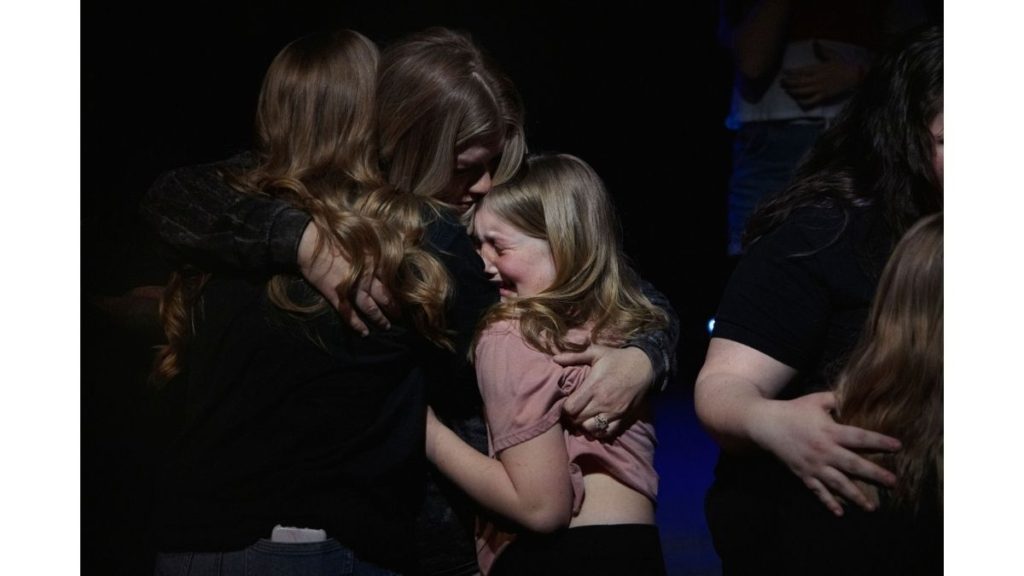
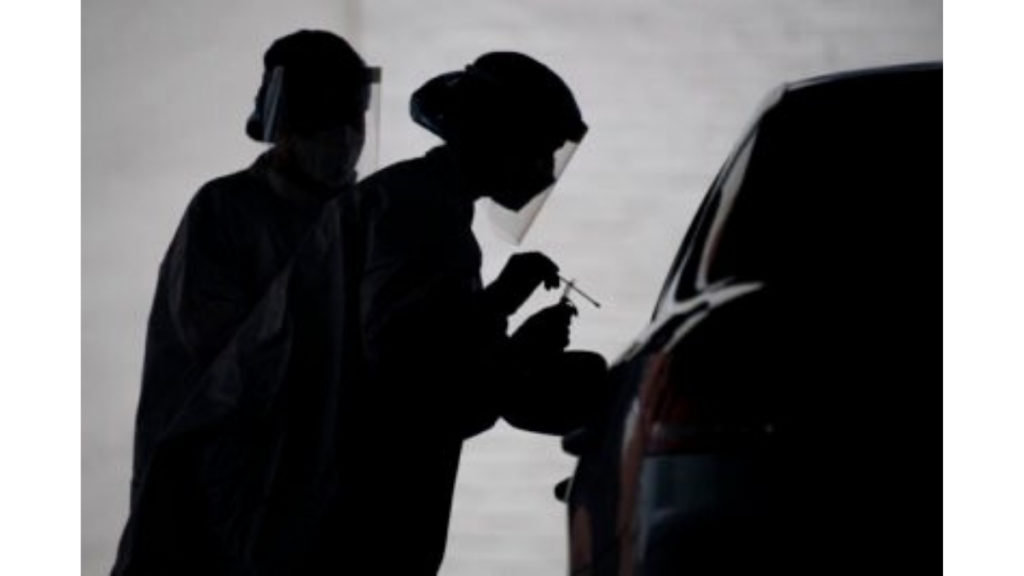
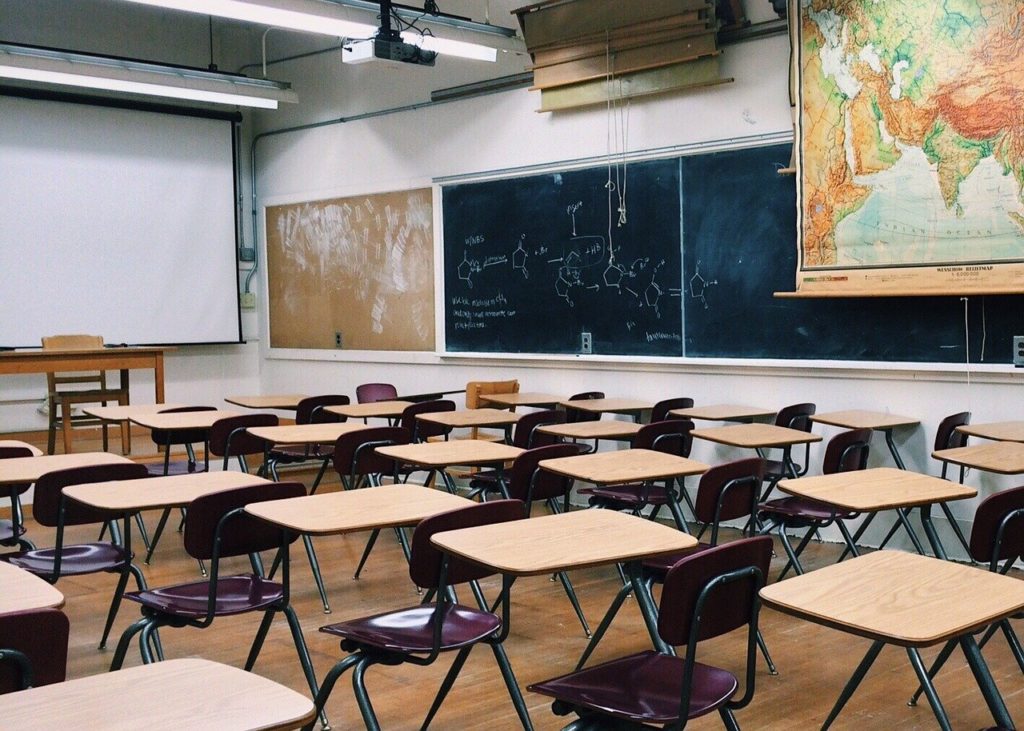
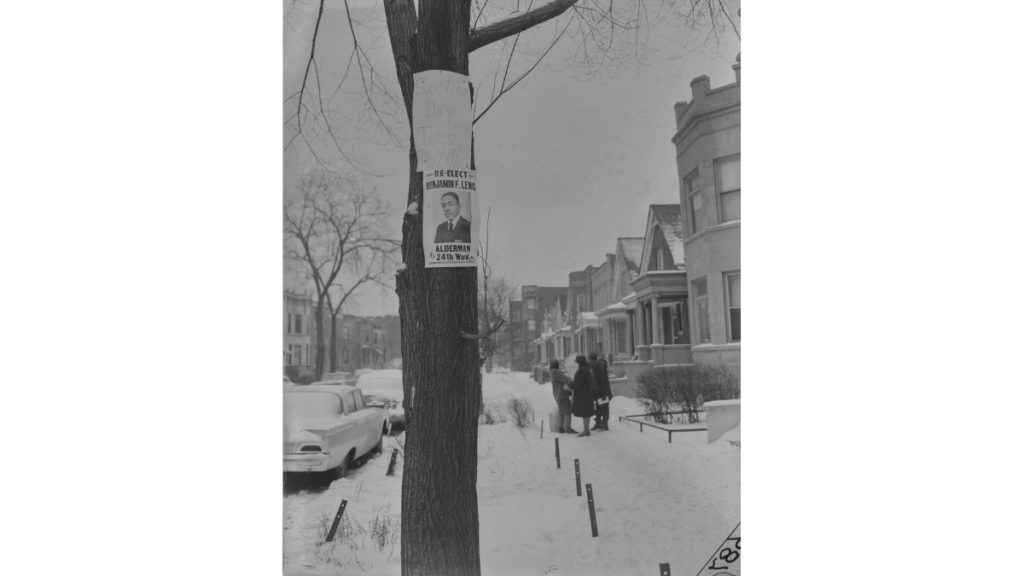
Responses